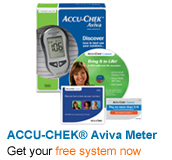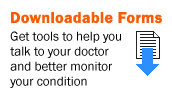How diabetes can affect the body
Poorly controlled diabetes increases your risk of other health problems, such as heart disease, eye disorders, kidney disease, feet and skin disorders, and nerve damage. You can do many things to prevent these problems or to slow them down. A healthy lifestyle is the most important tool for fighting diabetes. For many who have been diagnosed with diabetes, healthy habits should include diets, exercise and medicines.
All people with Type 1 diabetes need to take insulin. Most diabetes experts advise that most people with Type 2 diabetes need medicines to manage their blood sugar. Over time Type 2 changes and different types of medicine are usually necessary to control your blood sugar. Work with your diabetes care team to determine which medicines are right for you.
Type 2 diabetes and non-insulin medicines
There is no "best" pill or treatment for Type 2 diabetes. Your doctor may have you try any combination of pills + insulin. Pills work in different ways on different parts of the body to lower blood glucose levels. You doctor will prescribe the non-insulin medicines that are best for you.
Below are several types of diabetes pills and how they work on different parts of the body to lower your blood glucose levels.
- Biguanides: Stop the liver from putting out too much glucose in the blood. Examples are Metformin (Glucophage) and Glucophage XR (extended release).
- Thiazolidinediones: Lower your body’s resistance to insulin. Examples are Rosiglitazone (Avandia) or Pioglitazone (Actos).
- Glucosidase Inhibitors: Taken with the first bite of food in a meal. They stop starches from raising blood glucose after eating. Examples are Acarbose (Precose) or Miglitol (Glyset).
- Sulfonylureas: Signal your pancreas to make more insulin all day long. They are usually taken 1 to 2 times a day. Examples are Glyburide (Micronase, Diabeta, Glynase), Glipizide (Glucotrol, Glucotrol XL) or Glimepiride (Amaryl).
- Meglitinides: Signal the pancreas to release insulin for a few hours. They are taken before each meal. Examples are Repaglinide (Prandin) or Nateglinide (Starlix).
Insulin
In addition to oral diabetes medicine, you may need insulin. Insulin is a protein that has to be injected into the fat under your skin to reach your blood. Insulin’s main job is to keep your blood sugar level normal. Each person’s insulin need is different and changes over time. Your doctor will prescribe the insulin that is best for you.
- Rapid-acting Insulin: Taken right before a meal and will work in about 10-20 minutes. Lowers your after meal blood sugar level. Examples are Aspart (Novolog), Lispro (Humalog) or Glulisine (Apidra).
- Long-acting insulin: Taken at dinner or bedtime and will start to work in about 50-120 minutes. Controls your blood sugar level between meals and at bedtime. Examples are NHP, Detemir (Levimir) or Glargine (Lantus).
- Premixed (mixture of rapid-acting and intermediate-acting insulin): Taken before breakfast or before the evening meal or at both times and will start to work in about 10-20 minutes.
How to inject insulin
It is natural to feel nervous about giving yourself insulin injections. So it is important to know about the many ways to give yourself insulin. The three (3) we will discuss are the insulin pen, syringe and bottle insulin and insulin pump.
- Insulin pen
People like pre-filled insulin pens because they are disposable, discreet and convenient to carry. Insulin pens look like a writing pen. They have a short, fine needle at the end and you turn a dial to choose your dose. Pen needles are shorter and thinner than syringe needles making them almost pain free. Easy to read dosing dials help you avoid mistakes with your insulin dose. If you worry about injecting yourself with a syringe, the insulin pen is a good alternative.
- Syringe filled from a bottle of insulin
Filling a syringe from a bottle of insulin is the oldest way to inject insulin. A syringe is a hollow tube with a needle on one end and a plunger on the other. You clean the diaphragm of the insulin bottle with alcohol. Then stick the needle into the bottle and withdraw your dose. We do not recommend reusing syringes. Syringes may not be convenient when you inject insulin many times a day.
- Insulin pump
The insulin pump is an alternative to injecting insulin with a syringe. Insulin pumps are small battery-powered devices that are about the size of a cell phone. The pump gives rapid-acting insulin through a small tube often placed under the skin of your abdomen. Pumps do not automatically give a specific dose of insulin or measure blood sugar levels. For some people the pump can be more convenient than injecting insulin.
Helpful Web sites
Log on to the following sites to find out more information about diabetes medicines.







